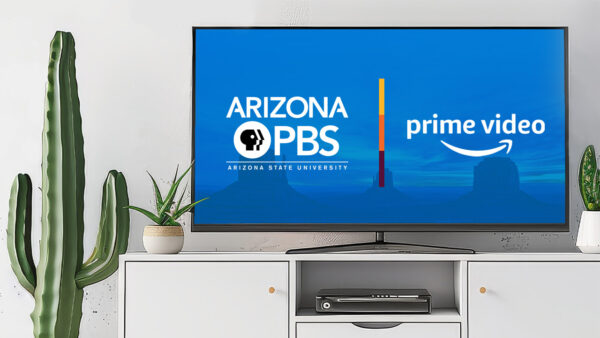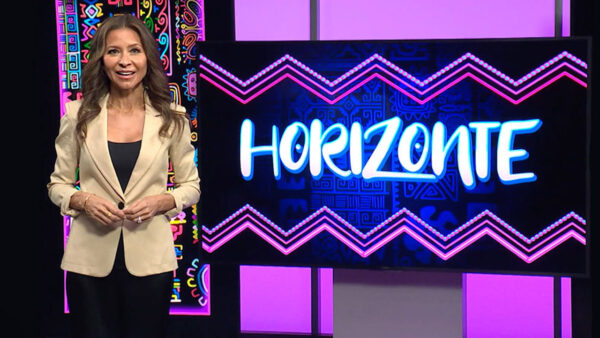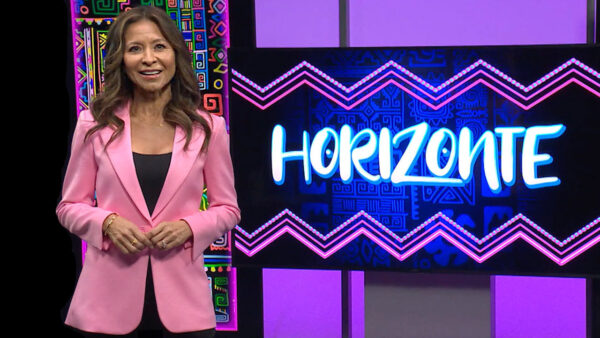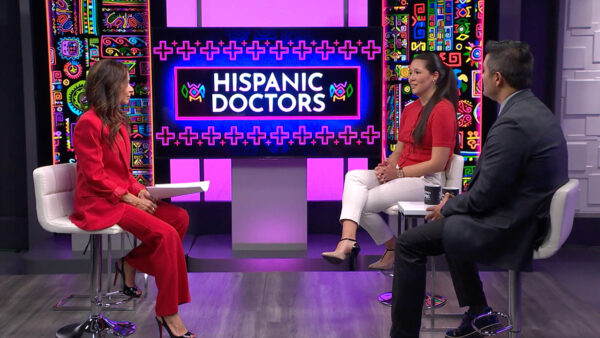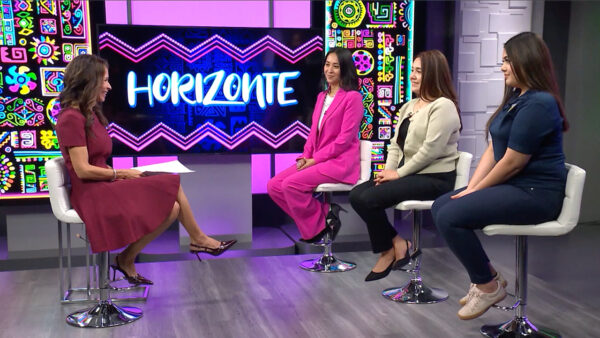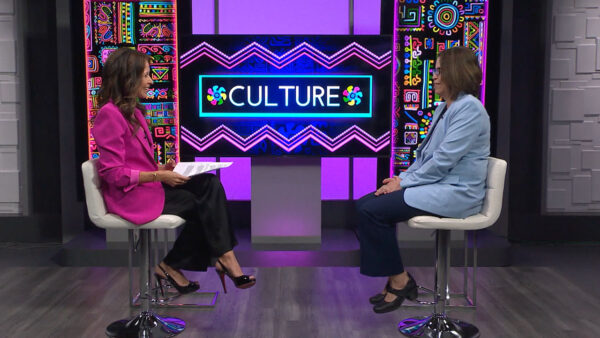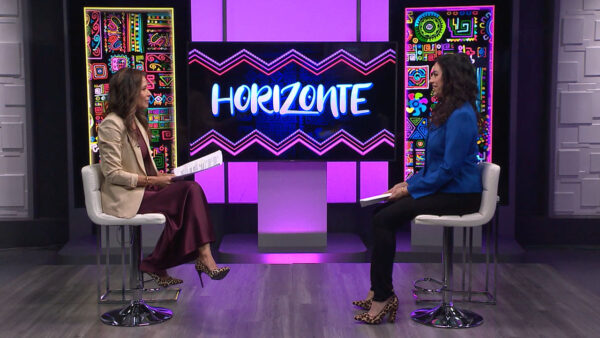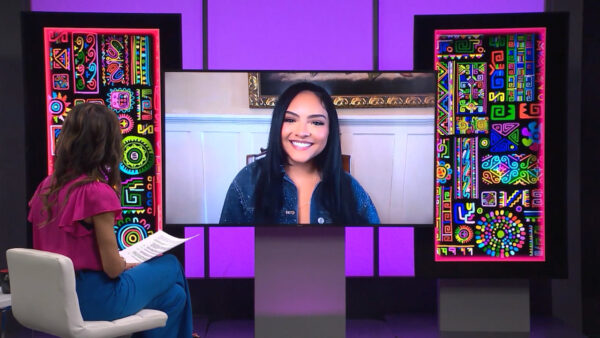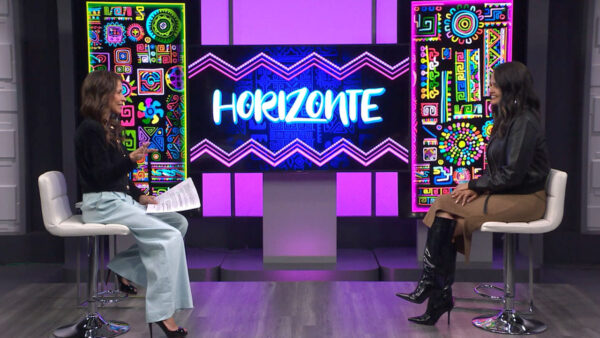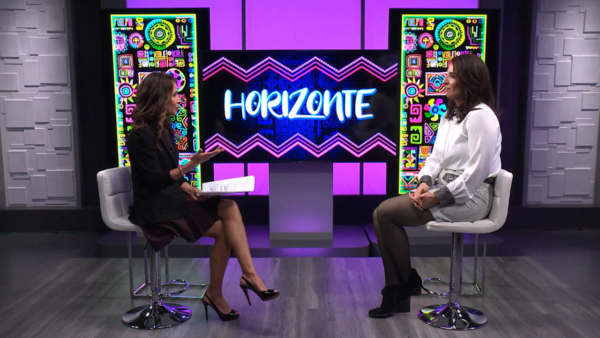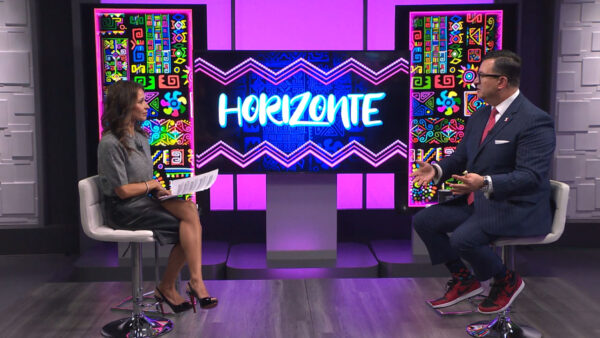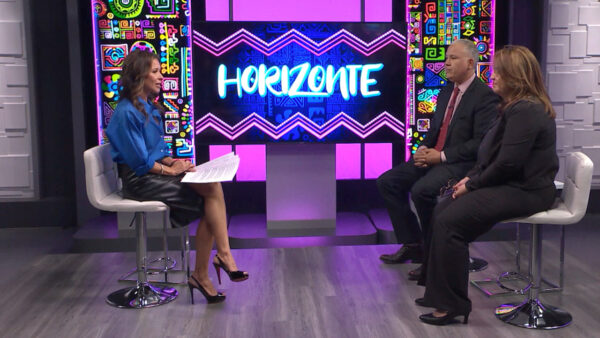PBS series “History Detectives” explores the complexities of historical mysteries. Associate Professor for the ASU School of Humanities, Arts and Cultural Studies and Co-host for the series Eduardo Pagan along with Co-host Elyse Luray talk about the show and some of the topics they have explored.
Jose Cardenas: The PBS series "History Detectives" explores the complexities of historical mystery, searching out myth and facts that connect local folklore, family legends and interesting objects. Joining me are two of the cohost of the series, Eduardo Pagan, also here is cohost Elyse Luray. Thank you both for joining us. For those very few people, I'm sure it's very few who aren't familiar with the series, give us the essence of it.
Elyse Luray: Viewers write in to us and they have a question about an artifact. They want to know if something is true about the artifact that connects them to a historical question. Basically we go off and try to figure out, is this question true or not. And as we're doing that, we talk about American history, we explore American history, and we show how the object is actually connected to a bigger history. Something compelling that has gone on in our history. We also teach people how to research, how to research objects, we go to public institutions, we show how archives are important, libraries are important, and that just Goggling something isn't really research. The show is really about how to research an object, and how to connect a piece, an artifact to the bigger picture of American history.
Jose Cardenas: One great example was a recent show you did with respect "Titanic."
Elyse Luray: Yes. I actually did the story, and a woman had a piece that she believed was the wood from the "Titanic." It was picture frame. She wanted to know, could this have come from the "Titanic." Someone else in her family thought maybe it came from another shipwreck. So the question was, what -- Did that happen? We told the story of the "Titanic," the history, we went to Halifax and were able to shed light on how there was a lot of salvage from the wreck. Unfortunately no people were salvaged, but there was a lot of wood salvaged. And it was a piece from the "Titanic."
Jose Cardenas: The series itself is basically a national show. It has a connection with the Oregon PBS station. But there are some Arizona connections. You're one of them.
Eduardo Pagan: Yes. I'm a full-time professor at Arizona state University. I'm a sun devil, as an undergraduate, that's where I went to school. So it's been a lot of fun trying to bring some Arizona and southwestern stories to the national audience.
Jose Cardenas: I want to talk about one of them that you were involved in, but before that, there's another Arizona connection, and that's the reason why the two of you are here. This week in Arizona, tell us about that.
Eduardo Pagan: I thought we would -- I would invite my cohost with 900 of my closest friends, and we would all converge over at the west campus, ASU's west campus and celebrate years of being on the air. So the three of us will share some stories from the past years, and there's a lot that happens behind the scenes. A lot of stories that we know about each other, I might tell a story or two about you, just to share with the audience.
Jose Cardenas: Start a little controversy right here.
Eduardo Pagan: Yeah, just -- It would be fun just to get together and meet our fans, and this is one of our stronger markets as well. I just thought it was a nice confluence of all sorts of things, bringing my cohosts, friends together along with residents in the valley.
Jose Cardenas: Another connection you referenced shows that have something to do with the southwest. One of the first ones did you had to do with Pancho Villa. We've got video, but tell us about that one.
Eduardo Pagan: One of our viewers had a watch fob. This is something people don't have today, but it's a piece of jewelry that hangs from a leather strap.
Jose Cardenas: The pictures on the screen, this is the raid on Columbus.
Eduardo Pagan: This is the one. And this watch Fob was Commemorating the raid. And this fob was given by a neighbor who said he was there. He's passed away, so she came to us and wanted to know, was he really there? Was he really an eye witness to this historic moment? So we're able to tell the story about the raid and also authenticate the fact he was not only there, he was a survivor and had a very interesting story to tell as a child, he and his family escaping the troops as they were coming in to Columbus, this family was actually going through canals to escape the troops and waited out until daylight. They were there and the story was true.
Jose Cardenas: Eduardo said there would be insights into how the show comes together. Give us a preview of what you'll be talking about to the people at the west campus.
Elyse Luray: I think a couple things. We get about 6,000 to 10,000 submissions a year. One of the things we'll talk about is how do we pick the good stories, what stories are compelling and what makes good television. We have a lot of trials and tribulations when you go out and try to shoot. And I think we'll tell about that. I've had stories where we shot a whole morning and didn't realize the sound person realized he never recorded. Or we've had stories where our --
Jose Cardenas: that never happens here. [laughter]
Elyse Luray: We shot a whole season once and wanted the assistant producers left the tapes in a room and the room was rob and our tapes were gone. We travel maybe to five or six states for one show, and I don't know how many plane rise sometimes, a lot of these don't show up. Fun things behind the scenes that also happen. We could work on a story for six to eight months and not get anywhere with it. So we're also going to share some of the frustrations that we have, because research sometimes happens quickly and easily, and sometimes it takes us a really long time.
Jose Cardenas: Eduardo, as I understand one of the interesting stories you're just wrapping up, or just did wrap up has to do with an iconic piece of the American west, at least as presented in the early days of television.
Eduardo Pagan: Yes. This was -- This just aired this week, it was a story of the sons of the pioneers. It was the first megacountry western group that existed in American history. One of our viewers had a sheet of music that was inscribed by bob Nolan, one of the founding --
Jose Cardenas: we're talking about sons of the pioneers, Roy Rogers.
Eduardo Pagan: Right. Before Roy Rogers was Roy Rogers. He was one of the singers of the sons. Bob was originally supposed to be the star. He was the one the Hollywood studios wanted to promote as the iconic cowboy. Bob was not interested in popularity or fame and he stepped away, so they said, OK, how about you? Leonard sly, and as it turned out, Leonard became Roy Rogers. And the rest is history. The sheet music was inscribed by bob, he wrote the song "tumbling tumble weeds" which was their first megahit. He wrote, this song has been bad and good to me. So our viewer, who purchased a copy of the sheet music wanted to know, what was he writing about? This is a megahit. This is what launched the sons of the pioneers. What was bad about this story? So bob passed away 3 or 4 decades ago and we were unable to interview him or his family, but we met with people who were part of the group, and who knew members of the group, were able to tell the story, as it turns out part of the reason why this story was bad as a struggling artist he sold the rights to the song. And so the royalties that for decades had not been paid. And he sued later on to try and get the rights to it, but it's a classic story of the artist who is struggling, in order to make money they sell the rights and it becomes this major hit and they see none of the profits. He was able to recover some of the profits, but there were decades of profits he just wasn't able to get back.
Jose Cardenas: Sounds like a great story. We're almost out of time, we know our viewers can watch "History Detectives" here on their local station, channel 8. But tell us your favorite.
Elyse Luray: My favorite story? Oh, god, there's millions -- I've loved every one for different reasons. My favorite was probably finding a piece of Amelia Earhart's plane. It was women in history month and my son came to school and said my mother find piece of Amelia Earhart's plane. I got a call from the teacher, your son is telling lies. No, we really did find it. And you can see them online. If you go to the PBS site if you ever want to see any of our shows they're all online.
Jose Cardenas: Thank you both for joining us, thank you so much.
Elyse Luray: Thank you.
Eduardo Pagan: Thank you.
Elyse Luray:Host, History Detectives; Eduardo Pagan:ASU Instructor and Host, History Detectives;



